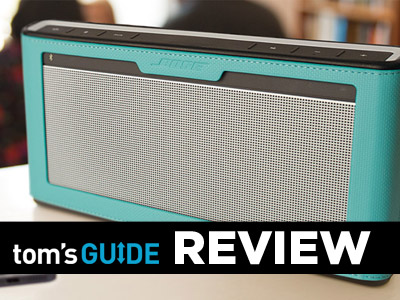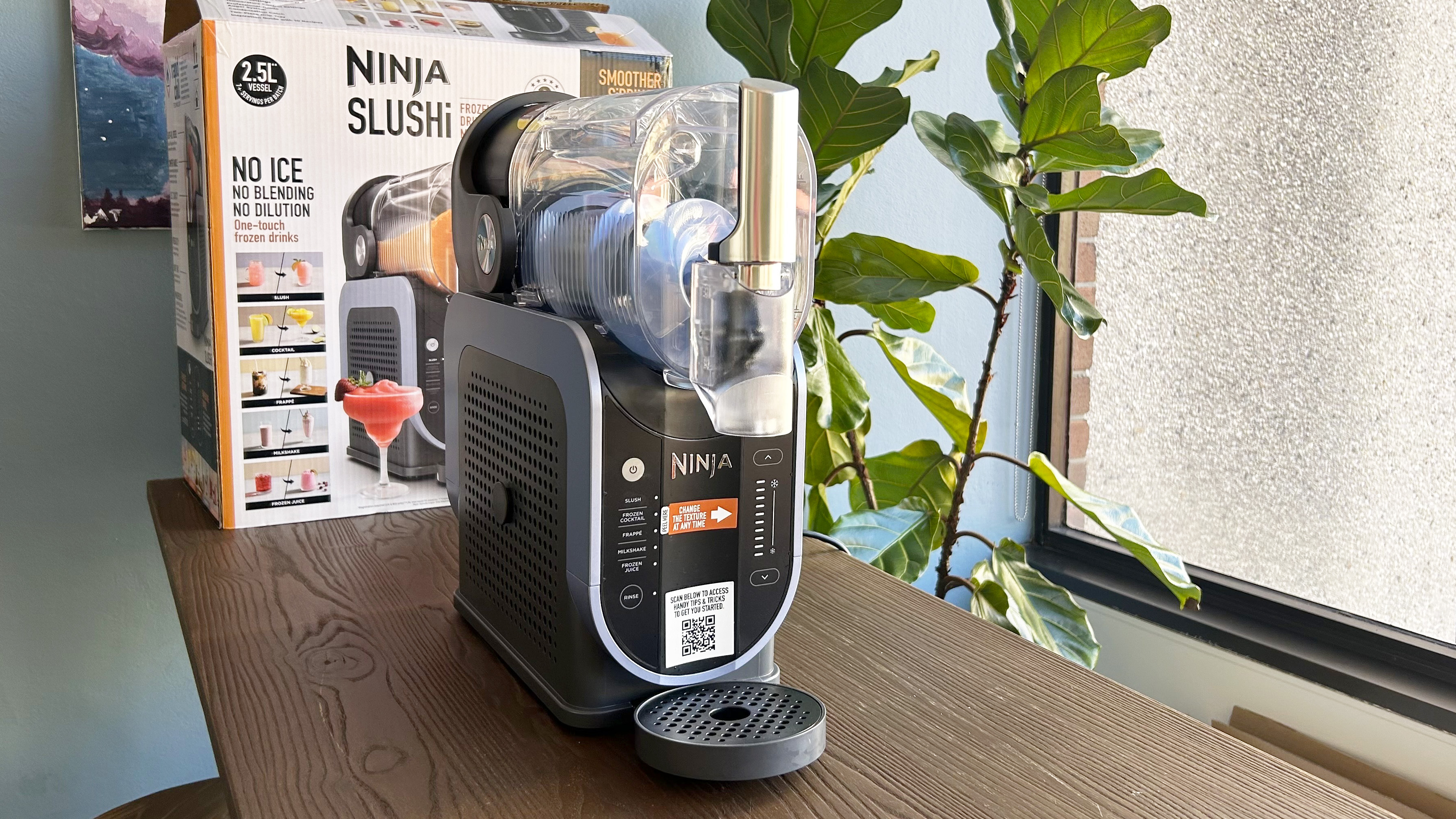Tom's Guide Verdict
The improved Bose SoundLink III Bluetooth speaker offers excellent audio quality and long battery life in an attractive design.
Pros
- +
Crisp, lively sound
- +
Good overall volume
- +
Sleek, sturdy design
- +
Good battery life
Cons
- -
No speakerphone
- -
Lacks track-skip buttons and USB charging
- -
High price
Why you can trust Tom's Guide
The SoundLink line of portable wireless speakers keeps improving in sound quality with each iteration. The line does, however, face a Bluetooth speaker market that has grown increasingly crowded with models boasting extras, such as mobile device charging and speakerphones. The SoundLink III is aimed at travelers who have fairly deep pockets and are more concerned with their musical experience than with bells and whistles.
Design
The SoundLink III retains the same basic, rectangular shape as its predecessors had, minus the integrated cover. The metal grille, thick plastic bumpers and rubber-covered controls along the top give the impression of good craftsmanship and sturdiness, while rubberized feet on the bottom keep the speaker stable.
The chassis retains the previous model's slim dimensions, at 1.9-inches thick, 5.2-inches high and just a bit wider than the SoundLink II, at 10.1 inches across. The slimmer shape makes the Bose a bit easier to slide into flatter types of bags than competitors like the Big Jambox (10 x 3.6 x 2.1 inches). Coming in at 3 pounds, however, the SoundLink III outweighs the Big Jambox (2.7 pounds).
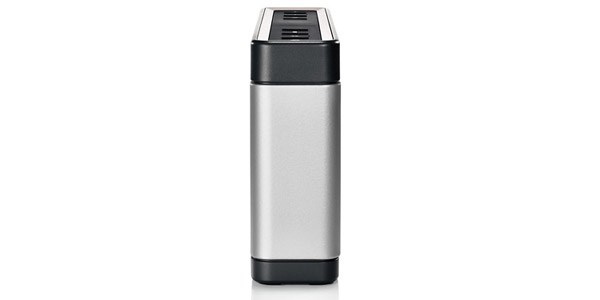
The SoundLink III isn't nearly as travel friendly as Bose's SoundLink Mini (7.1 x 2.3 x 2 inches, 1.5 pounds), but you can easily move the SoundLink from room to room. It's really designed more for occasional travel than the Mini.
MORE: Best Bluetooth Speakers
Features
The SoundLink III offers a fairly sparse design, with a line-in (aux-in) minijack, power jack and microUSB port on the back. Unlike competing speakers, the SoundLink III doesn't charge via USB (the port is strictly for firmware upgrades) or provide the ability to charge other devices, as the models from Braven do. But we do like the 14-hour battery life, which is up from the SoundLink II's eight hours.
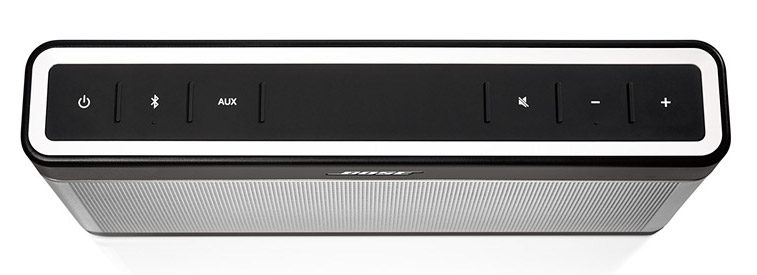
Controls along the top include power, Bluetooth discovery mode, aux (to listen to a device plugged into the aux port), mute and volume up/down. Conspicuously missing are play/pause and track-skip buttons, and although you can control those functions from your mobile device or computer, there's plenty of free space on top for that purpose. A row of LED indicators for Bluetooth, aux input, mute and battery power sits on front just below the top.
Competitors like Jawbone's Big Jambox and Braven's 850 HD offer far more in the way of extras, such as speakerphone, customizability (Jawbone) and additional device charging (Braven), all for the same price.
The SoundLink III package doesn't include any extras besides the AC power wall plug; a zippered case for the speaker costs an extra $35, though its light design appears more for decoration than protection.
Audio performance
Overall, the SoundLink III's dual passive radiators do a good job squeezing out ample upper bass, and the tonal balance tends towards brightness. The volume was significantly louder than in previous models, but we didn't notice any distortion, even at top volume.
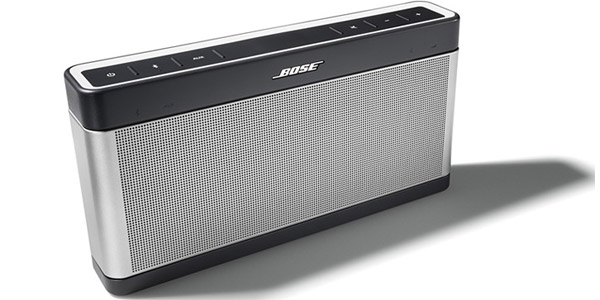
The lively sound works well for acoustic music and mellower rock and pop, but bass-heavy hip-hop and kickdrum-centric metal sounded a bit thin. In a speaker this size, however, we're somewhat forgiving about the bass, as it simply takes a larger speaker to reproduce deep lows. Here's what we encountered in our testing:
John Coltrane's "Blue Train" exhibited good acoustic bass definition; the horns were a little bright, but the cymbals sounded very crisp. The piano was a little muddy, but the overall sound was pleasing.
Yo-Yo Ma's solo rendition of Bach Cello Suite 1 in G sounded slightly unnatural; the speaker's tonal colorations didn't quite suit the instrument's complex timbre, and the boosted highs made the sound a bit too airy.
Jay-Z's "Holy Grail" featuring Justin Timberlake sounded good on the intro, with JT's vocals coming through clear and crisp despite a tiny bit of harshness on the sibilants during the chorus. Unfortunately, as with any speaker this size, you lose the deep synth bass that enters with Jay-Z's vocals, so the track simply fell flat.
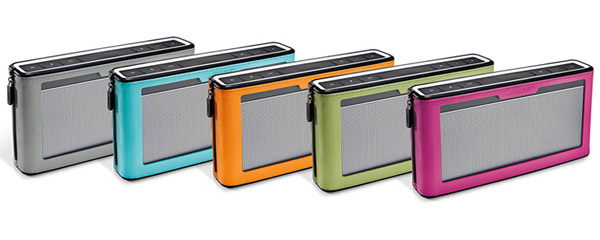
AC/DC's classic "Back in Black" sounded edgy, with up-front vocals and plenty of crunch and bite in the guitars. The kick drum and bass didn't have as much impact as they would on a bigger speaker, like the Bowers & Wilkins Z2, but the overall volume and crispness made up for that somewhat.
On Pink Floyd's "Comfortably Numb," the vocals cut through the psychedelic soup very well, with plenty of sparkle that helped bring out the acoustic guitar as well.
Diane Schuur's vocal version of "Autumn Leaves" backed by Maynard Ferguson's big band offered up powerful electric bass with very good overall balance. Maynard's trumpet, the occasionally muted trumpet section and Schuur's voice all lie in the speaker's sweet spot of performance, and it rendered them very well.
MORE: Best Headphones
Verdict
At $299, the SoundLink III is a significant investment for those who want to fill a small room or patio with clear sound, but it isn't any pricier than competing models from Jawbone and Braven. Bose manages to pack plenty of sonic punch and battery life into a slim package, improving significantly on the previous model. Furthermore, the SoundLink III offers better clarity and volume than competitors like Jawbone's Big Jambox and Braven's 850 HD. The lack of extras like speakerphone and onboard playback controls comes as a surprise at this price. But if you can live without those amenities, the SoundLink III is one of the best portable wireless speakers you can get.
(If your needs, and budget, are bigger — say, for outdoor use at a decent-size party — check out the $449 Soundcast Melody.)
Mike Kobrin is a freelance journalist who has written about audio technology for the likes of Popular Science, Popular Mechanics, Mens Journal, Rolling Stone, Consumers Digest, DigitalTrends, Wired News, CrunchGear, CNet and PC Magazine, as well as Tom's Guide. He's also a musician, with years of experience playing the trumpet.
